Introduction
In today’s fast-paced work environment, the concept of a healthy and ergonomic workspace has become increasingly important. One of the most significant advancements in office furniture design that addresses these concerns is the electric height-adjustable desk. These desks have revolutionized the way we work by offering the flexibility to switch between sitting and standing positions throughout the day, promoting better health and increased productivity.
1. Introduction to Electric Height-Adjustable Desks
Electric height-adjustable desks, also known as sit-stand desks, are a type of office furniture that allows users to easily adjust the desk’s height to accommodate both sitting and standing work positions. These desks are equipped with an electric motor that enables smooth and precise height adjustments, making it convenient for users to find their optimal working position. The basic function of an electric height-adjustable desk is to provide a comfortable and healthy workspace that can be customized to fit the individual needs of each user.
The design of these desks is not just about convenience; it’s also about promoting a healthier lifestyle. Prolonged sitting has been linked to various health issues, including back pain, obesity, and even an increased risk of cardiovascular diseases. By allowing users to alternate between sitting and standing, electric height-adjustable desks help to mitigate these risks and contribute to a more active and dynamic work routine.
2. The Importance of Ergonomics in Modern Offices
 The rise of electric height-adjustable desks is closely tied to the growing awareness of ergonomics in the workplace. Ergonomics is the science of designing the workplace, the work environment, and the tasks performed to fit the worker, rather than forcing the worker to fit the work. It’s about creating a balance between the job requirements and the capabilities of the worker, which leads to increased comfort, reduced risk of injury, and improved productivity.
The rise of electric height-adjustable desks is closely tied to the growing awareness of ergonomics in the workplace. Ergonomics is the science of designing the workplace, the work environment, and the tasks performed to fit the worker, rather than forcing the worker to fit the work. It’s about creating a balance between the job requirements and the capabilities of the worker, which leads to increased comfort, reduced risk of injury, and improved productivity.
In the context of office furniture, ergonomics means designing desks that can adapt to the user’s body and work style. Electric height-adjustable desks are a prime example of this principle in action. They offer a level of flexibility that traditional desks cannot match, allowing users to customize their workspace to reduce strain and discomfort. Whether it’s adjusting the height to promote better posture or finding a comfortable position to alleviate back pain, these desks are designed to support a healthier and more efficient work process.
As we continue to explore the benefits of active workstations and the impact of sedentary lifestyles on our health, electric height-adjustable desks are becoming an essential component of the modern office. They represent a significant step forward in the evolution of office furniture, offering a practical solution to the challenges posed by long hours of sitting.
3. Control Panel and User Interface
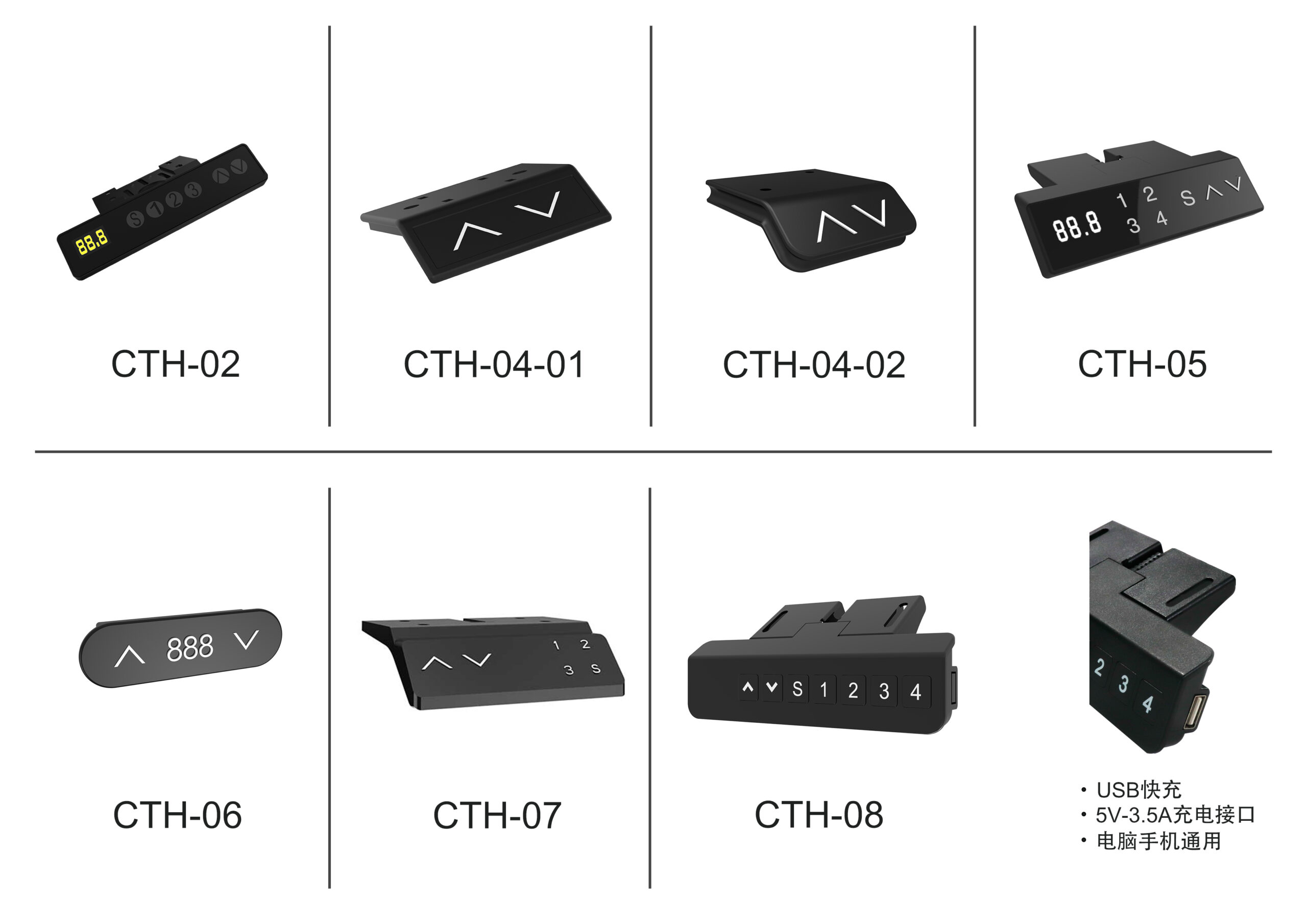 The control panel is the brain of the electric height-adjustable desk, allowing users to interact with the desk’s motor and achieve the desired height with ease. This panel can come in various forms, from simple up/down button configurations to more advanced touchscreen interfaces. The control panel not only facilitates the basic functions of raising and lowering the desk but also often includes additional features such as memory presets, which save specific height settings for quick recall, and programmable height adjustments that can be scheduled for different times of the day.
The control panel is the brain of the electric height-adjustable desk, allowing users to interact with the desk’s motor and achieve the desired height with ease. This panel can come in various forms, from simple up/down button configurations to more advanced touchscreen interfaces. The control panel not only facilitates the basic functions of raising and lowering the desk but also often includes additional features such as memory presets, which save specific height settings for quick recall, and programmable height adjustments that can be scheduled for different times of the day.
The user interface should be intuitive and easy to navigate, ensuring that users of all technical abilities can operate the desk without difficulty. Advanced control panels may also offer features like digital displays that show the current height, allowing for precise adjustments. Some high-end models even integrate with smart devices, allowing users to control their desk via an app, which can also track activity and posture over time.
4. Transmission System
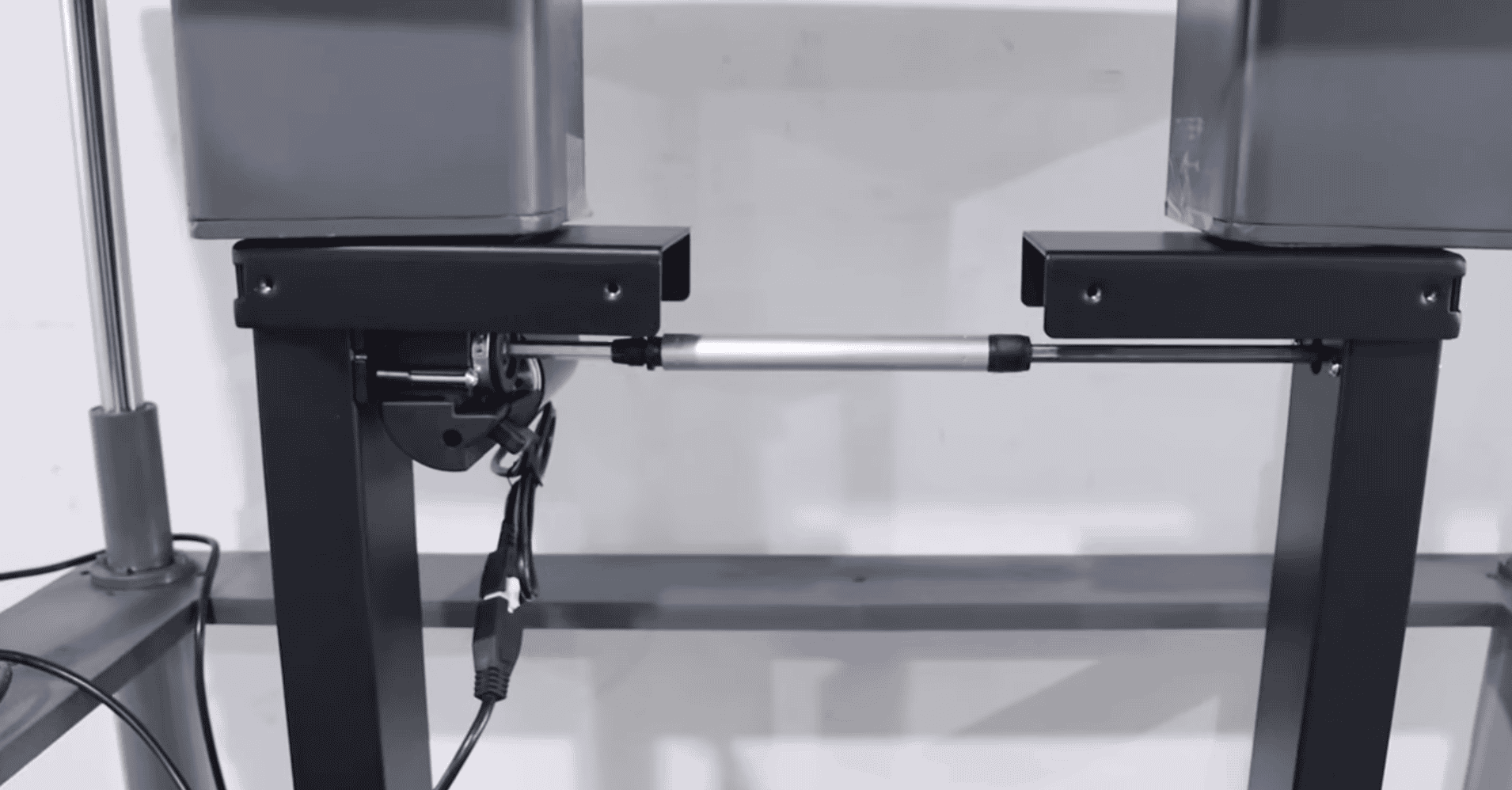 The transmission system in an electric height-adjustable desk is what translates the motor’s rotational force into the linear movement needed to raise and lower the desk surface. This system is crucial for the desk’s performance and reliability. There are several methods used for transmission, each with its own set of advantages and disadvantages.
The transmission system in an electric height-adjustable desk is what translates the motor’s rotational force into the linear movement needed to raise and lower the desk surface. This system is crucial for the desk’s performance and reliability. There are several methods used for transmission, each with its own set of advantages and disadvantages.
- Gear Systems: These are known for their efficiency and precision, ensuring a smooth and steady movement of the desk.
- Chain Drives: Chains are durable and require less maintenance, but they can be noisier and may require occasional lubrication.
- Belt Drives: Belts offer a quiet operation and can handle high loads, but they may stretch over time, affecting the desk’s precision.
- Screw Drives: Screw drives provide a robust and stable lift, with the ability to handle heavy loads, but they can be more expensive and may require more space within the desk’s frame.
The choice of transmission system can affect the desk’s noise level, speed of adjustment, and overall longevity, so it’s an important consideration in the design and manufacturing process.
5. Desk Leg Structure and Design
 The structure and design of the desk legs are critical to the stability and Load-bearing capacity of an electrically height-adjustable desk. The legs must be strong enough to support the weight of the desk surface and any additional equipment or users, while also allowing for smooth height adjustments.
The structure and design of the desk legs are critical to the stability and Load-bearing capacity of an electrically height-adjustable desk. The legs must be strong enough to support the weight of the desk surface and any additional equipment or users, while also allowing for smooth height adjustments.
There are two main types of leg designs:
- Dual-Column Desks: These have two legs, one on each side of the desk, which provide a good balance of stability and space efficiency. They are often more affordable and take up less floor space than four-column designs.
- Four-Column Desks: These desks have a leg at each corner, offering increased stability and the ability to support larger or heavier desk surfaces. They are ideal for larger workspaces or for users who require more stability.
The legs are typically made from steel or aluminum, with the latter being lighter and often more expensive. The design of the legs also includes the mechanism for the transmission system, whether it’s gears, chains, belts, or screws, which are housed within the leg structure to keep the desk’s appearance clean and professional.
In conclusion, the desk leg structure and design play a significant role in the overall performance and aesthetic of an electric height-adjustable desk, making them an essential aspect of the desk’s functionality.
6. Limit Switches and Safety Features
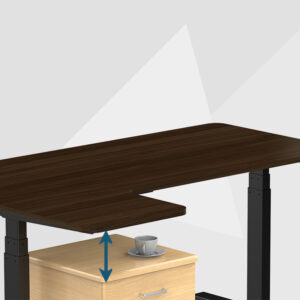 Safety is paramount in the design of electric height-adjustable desks, and limit switches play a crucial role in ensuring that the desk operates within a safe range. These switches are sensors that detect when the desk has reached its maximum or minimum height, preventing it from moving beyond these limits and potentially damaging the motor or the desk itself.
Safety is paramount in the design of electric height-adjustable desks, and limit switches play a crucial role in ensuring that the desk operates within a safe range. These switches are sensors that detect when the desk has reached its maximum or minimum height, preventing it from moving beyond these limits and potentially damaging the motor or the desk itself.
In addition to limit switches, electric height-adjustable desks often include other safety features such as:
- Obstacle Detection: This feature uses sensors to detect when an obstacle is in the path of the desk as it’s being raised or lowered, causing the desk to stop or reverse direction to avoid damage or injury.
- Load Sensors: Some desks are equipped with load sensors that can detect the weight on the desk and adjust the motor’s power accordingly, ensuring a smooth and safe operation even when the desk is fully loaded.
- Emergency Stop Buttons: In case of any malfunction or emergency, these buttons allow users to immediately stop the desk’s movement.
Incorporating these safety features not only protects the desk and its components but also ensures the well-being of the users, making the workplace safer and more reliable.
7. Power Supply and Energy Consumption
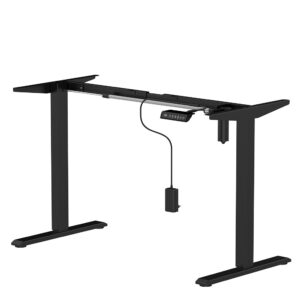 The power supply for electric height-adjustable desks is another important consideration. Most desks are plugged into a standard electrical outlet, providing a continuous supply of power to the motor. However, some models are now being developed with battery-powered options, which offer greater flexibility in terms of placement and can still provide a significant number of adjustments on a single charge.
The power supply for electric height-adjustable desks is another important consideration. Most desks are plugged into a standard electrical outlet, providing a continuous supply of power to the motor. However, some models are now being developed with battery-powered options, which offer greater flexibility in terms of placement and can still provide a significant number of adjustments on a single charge.
Energy consumption is a key factor in the overall sustainability and cost-effectiveness of electric height-adjustable desks. Modern designs focus on energy-efficient motors and systems that minimize power usage while still providing strong performance. Users can also contribute to energy conservation by selecting desks with sleep modes that turn off the motor after a period of inactivity, or by choosing battery-powered models that can be charged during off-peak hours.
8. Memory Function and Software Integration
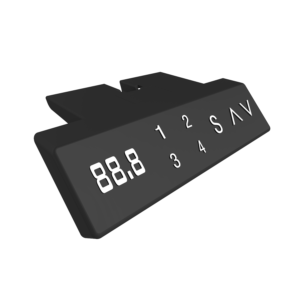 The memory function in electric height-adjustable desks is a feature that enhances user convenience and efficiency. It allows users to save their preferred height settings, so the desk can be quickly adjusted to the perfect position with just a button press. This is particularly useful in shared workspaces or for users who alternate between sitting and standing throughout the day.
The memory function in electric height-adjustable desks is a feature that enhances user convenience and efficiency. It allows users to save their preferred height settings, so the desk can be quickly adjusted to the perfect position with just a button press. This is particularly useful in shared workspaces or for users who alternate between sitting and standing throughout the day.
Software integration takes the memory function a step further, allowing desks to be connected to smartphones, tablets, or computer systems. With this integration, users can not only control their desk’s height but also track their posture and movement habits over time. Some systems even offer the ability to sync multiple desks within an office, allowing for centralized management of desk settings and usage data.
Advanced software can also provide health tips and reminders to change positions, contributing to a more active and healthy work environment. As smart office technology continues to evolve, the integration of electric height-adjustable desks with these systems becomes increasingly important, offering a seamless and intelligent workspace experience.
9. Maintenance and Troubleshooting
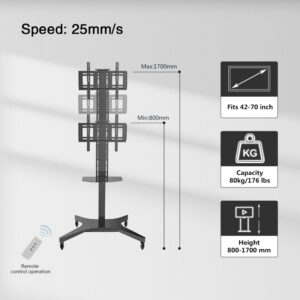
Proper maintenance is essential to ensure the longevity and optimal performance of electric height-adjustable desks. Regular checks and simple upkeep tasks can prevent minor issues from becoming major problems. Here are some basic maintenance tips:
- Lubrication: Periodically lubricate the moving parts, such as the screws or chains, to ensure smooth operation and reduce noise.
- Inspection: Regularly inspect the desk for any signs of wear and tear, especially on the legs and the transmission system.
- Cleaning: Keep the desk clean, especially the control panel and the areas around the motor, to prevent dust and debris from affecting performance.
- Tightening: Check for any loose screws or bolts and tighten them as needed to maintain stability.
Troubleshooting common issues, such as the desk not moving or making unusual noises, can often be resolved by following the manufacturer’s guidelines or consulting the user manual. If problems persist, it’s best to contact the manufacturer or a professional for assistance to avoid voiding any warranties or causing further damage.
10. Conclusion
In conclusion, electric height-adjustable desks offer a dynamic solution to the static office environment, promoting health and comfort in the workplace. Their working principle revolves around a combination of motor-driven systems, intuitive control panels, efficient transmission mechanisms, sturdy desk leg structures, and a range of safety features. With the added benefits of power efficiency, memory functions, and software integration, these desks are not just furniture but components of a smarter, healthier office ecosystem.
As we look to the future, the integration of technology and ergonomics in office furniture will continue to evolve, with electric height-adjustable desks at the forefront of this movement. By adopting such desks, organizations can foster a work environment that supports the well- being and productivity of their employees, setting a standard for modern workplaces.



